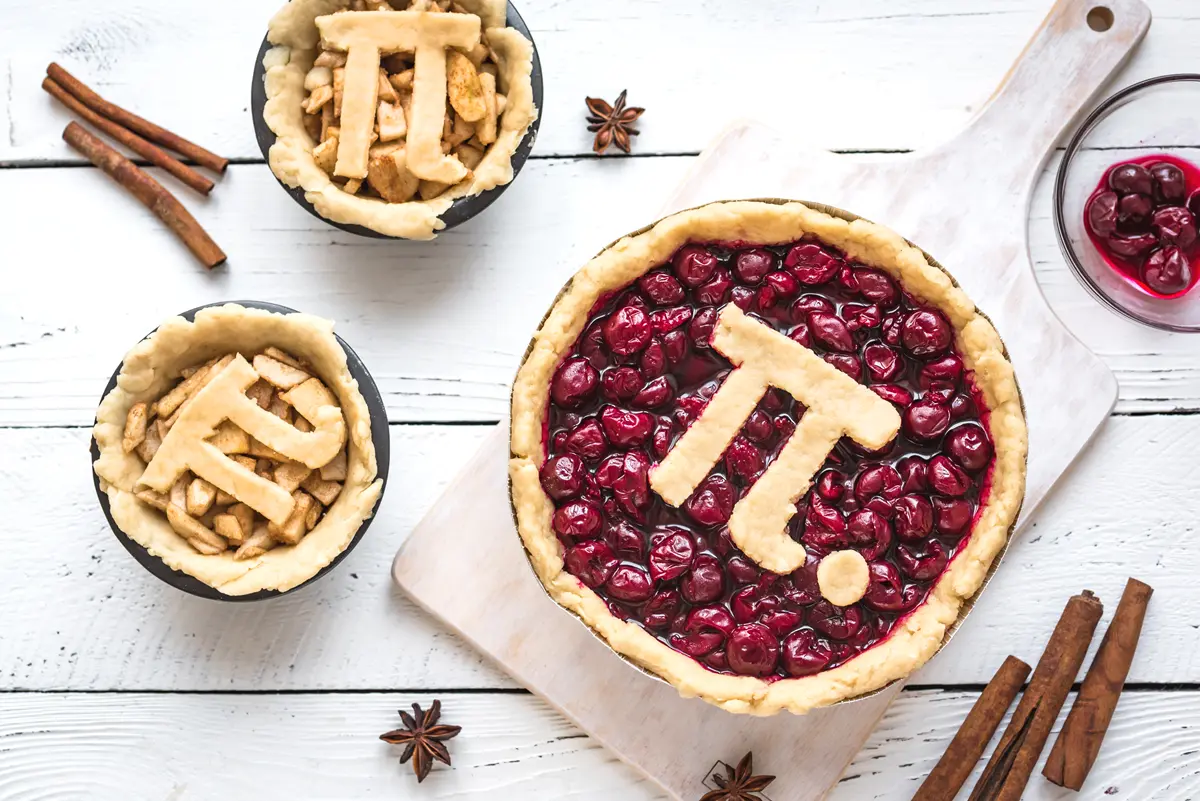Mathematics Expert Answers Questions about Pi in Honor of Pi Day
 Image by Getty Images
Image by Getty Images
03/11/2024
By Brooke Coupal
We’re celebrating pi this Pi Day, and no, we’re not talking about a decadent lemon meringue pie or a creamy pumpkin pie, so you can leave your forks at home.
March 14 is the annual celebration of pi, a number used in mathematics with an infinite amount of decimals that can be rounded to 3.14. Educators have been celebrating the day since the late 1980s, and in 2009, Congress officially declared March 14 as Pi Day.
As an adjunct professor in the Department of Mathematics and Statistics, Matthew Beyranevand ’03, ’10 is very familiar with pi. Beyranevand, who is also the K-12 mathematics coordinator for Chelmsford Public Schools in Chelmsford, Massachusetts, answered our questions about pi in honor of math’s big day.
Q: What is pi?
A: Pi is a ratio that compares a circle's circumference, the distance around a circle, to its diameter, the straight line from one point of the circle to another that goes through its center. In all cases, the circumference is always about 3.14 times longer than the diameter.
Q: When was pi discovered?
A: The earliest concrete evidence of recognizing the ratio and determining an approximate value of pi dates back to approximately 1850 B.C.E., when the Babylonians had estimated the value to be approximately 3.16, which is very close to its actual value.
 Image by Courtesy
Image by Courtesy
Q: Why is pi significant in mathematics?
A: Pi is an essential constant that is used in all calculations with circles. What makes pi so unique is that it is an irrational number, meaning it cannot be written as a ratio of two numbers. When irrational numbers are expressed as decimals, they continue forever without repeating. Other irrational numbers are the square root of 2 and Euler’s value of e, which is the base of natural logarithms.
Q: Pi is typically referred to as the decimal 3.14 but some use the fraction 22/7. What are your thoughts on this?
A: It is very frustrating when I see this representation of pi, as it makes it appear that pi is rational and can be written as a ratio of two numbers, which it cannot. I understand the need to have a precise value when doing calculations, but I much prefer using 3.14.
Q: When are students introduced to pi in Massachusetts?
A: The Massachusetts state standard calls for an introduction and application of pi in seventh grade, and the Chelmsford Public Schools curriculum matches the state standard. We often introduce pi by having students measure the circumference and diameter of different-sized circles using string and a ruler. We then compare how much longer the circumference of each circle is to the diameter, and it always comes out to be a little bit more than three times longer. This helps students see the pattern of the constant relationship and is a fun way for them to discover the approximate value of pi. Years ago, a group of seventh-grade students worked with me to make a math music video on pi.
Q: Lots of people use Pi Day as an excuse to eat pie. What is your favorite kind of pi(e)?
A: I am a sucker for warm apple pie with a scoop of vanilla ice cream.
